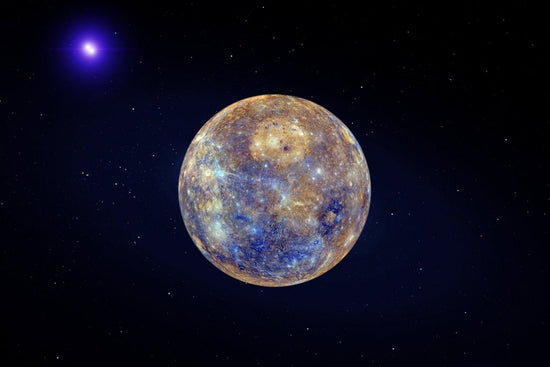It’s a bit of mystery as to why Krampus, the mythical Alpine demon who punishes naughty children every winter, has finally gained attention here in the U.S.
Some think Americans have clung to the idea of a “Christmas antihero”, a character who rebels against and shines light on the rampant consumerism and over-commercialization of the holiday. Could he be the perfect punk prom king of memes, a mascot for those who rebel against the economics of Christmas?
Perhaps Krampus is the perfect spokesman to prevent children from becoming spoiled and overly coddled by their parents and society alike. For some, he perfectly represents a backlash against Americans’ sense of entitlement.
Maybe people are just bored with the unabashed cheeriness of Christmas and thrilled by the idea of creating new traditions while embracing older, darker customs. And hey, some of us just enjoy a little terror.
To be clear, we have a few wrong ideas about Krampus. In Alpine tradition, Krampus isn’t the arch nemesis of Santa. He’s actually Saint Nick’s teammate. The two work together - the saint to reward good behavior, the demon to dissuade misconduct.
In fact, Saint Nick and our American Santa Claus aren’t even the same dude. And Krampusnacht is a celebration of long winter nights and Yuletide cheer in early December - weeks before Christmas day.
In America, we’ve really latched onto the violence and terror that the legend elicits, but that’s not really the point in Alpine festivities.
So when we talk about Krampus in popular culture, unfortunately many of the references aren’t true to his real meaning. Nonetheless, he’s recently received somewhat of a cult following. Whether true to tradition or amplified for terror factor, people kinda just love this guy.
How Krampus grew in popularity in the U.S.
The city of Chicago claims itself the “Krampus capital” of the States because of a man named Monte Beauchamp, who is said to have started the craze here. A graphic designer and art director, he found himself fascinated by old paintings of the Alpine beast.
It started when a friend gifted him some pre-WWI postcards, many of which were Krampus holiday cards. Beauchamp was immediately drawn in by the craftsmanship of the vintage artwork. He chose to feature some of them in his magazine BLAB!, and found that they got an overwhelming response. When he realized there was enough interest, he decided to put out a book about it.

Source: Amazon
In 2004, he released “The Devil in Design: The Krampus Postcards”. The book is a collection of rare, late-19th century Christmas postcards with an overview on the history of Krampus and the postcard industry that helped spread his infamy.
Shortly after its release, television shows (like Anthony Bourdain’s No Reservations and Supernatural) started sending Beauchamp requests to license images. He was then able to publish “Krampus: The Devil of Christmas” in 2010, an updated and much-improved version of the first book.
Though it’s tough to say how much Beauchamp was explicitly responsible for Krampus’ rise in the U.S, it’s clear that most pop culture references of the demon began just after that second publishing.
Krampus references in pop culture
Krampus’ first appearance in the United States seems to be in the arcade game CarnEvil in 1998. He’s featured as one of the boss characters as an evil version of Father Christmas who uses his claws or a sturdy stick to attack the player.
It’s not until nearly twenty years later that we see his face again. Mostly over the last decade, Krampus has begun to sneak his way into pop culture references. Unsurprisingly, he makes most of his cameos on holiday specials for popular television shows.
You can find him in animated series such as Scooby Doo and Adult Swim’s Venture Bros. Seth MacFarlane geniusly used the Krampus character as a satirical reference to scrutinize modern Christmas culture and the over-coddling of our children.

Source: LACSlife.com
In 2013 the popular series Grimm put out “12 Days of Krampus”, an episode where the evil goat starts kidnapping delinquent teens around town. In The League, one of the main characters attempts to initiate Krampus into Christmas mall culture in “A Krampus Carol”, only to get attacked by the mall Santa.
Krampus has also received starring roles in a few movies dedicated solely to his legend (or a horribly botched, overly-Hollywood rendition of such). His breakout year seems to have been 2015, when several movies were released in his honor.
There’s Krampus: The Reckoning, a horror movie with a less-than-impressive CGI interpretation of our Alpine friend. More popular was the comedy horror film Krampus put out the same year that’s been estimated to have grossed $61 million worldwide, starring Adam Scott and Toni Collette. Again in 2015, Krampus was featured in one of the stories in A Christmas Horror Story, an anthology film.
The next year in 2016, the horror movie Krampus Unleashed came out. For a while there, Krampus was becoming an annual icon of Christmas horror. It’s been a few years since another Krampus-themed Christmas movie came out, but there’s supposed to be a few in the works.
Outside of TV series and movies, there’s a couple of books that are worth mentioning, and they do a lot more justice in telling the real story of Krampus. Of course, there’s the books put out by the aforementioned Monte Beauchamp.
In addition to Beauchamp’s work, chaos-loving author and artist Al Ridenour published a book in 2016 titled The Krampus and the Old, Dark Christmas: Roots and Rebirth of the Folkloric Devil. Ridenour takes a deep-dive into German and Austrian traditions and folklore to help bring the mysterious creature (and other associated characters) to life.

Source: HuffPost
Arguably the most exciting places to find Krampus are the Krampusnachts, the Krampuslaufs, the balls, and parades. Krampus has become the American king of counterculture celebrations near Christmastime. You can now find festivities throughout the United States that run the gamut from traditional to Halloween/Christmas mashups.
Is Krampus becoming too commercial?
True fans and traditionalists worry that Krampus is becoming too mainstream. Certainly, the Krampus chocolates and stuffed dolls dumb things down a bit. Horror aficionados have found the perfect scapegoat to turn the overly-cheery American Christmas on its head.
As with anything, once this dark antihero catches on too much, it’ll be difficult to avoid over-commercialization. Already, many of the celebrations in the States are pretty far from what Krampus is really about. Some of these processions use the legend as an excuse to get in costume, party, and embrace the fun that can come with a little dose of terror.
That isn’t necessarily a negative thing on its own, but some people feel it’s another old cultural tradition that’s being exploited. While Krampus festivities can be seen as a defiance against a consumer-focused holiday, are they actually another commodity to be capitalized on? Is celebrating Krampus a retaliation against consumerism - or just another excuse for it?
Maybe, if nothing else, the resurgence of Krampus can remind us that we don’t get rewarded with gifts simply for showing up. After all, the original idea is that good behavior gets rewarded and bad behavior doesn't. Let the spirit of Krampus be a reminder that light doesn’t come without the dark.






1 comment
I’m in interested in your products. I’m trying to decide which one to purchase.